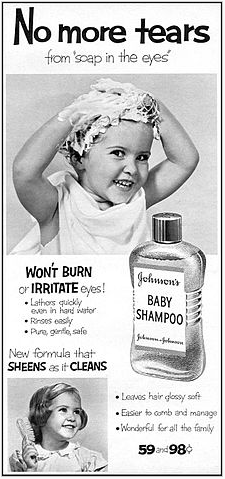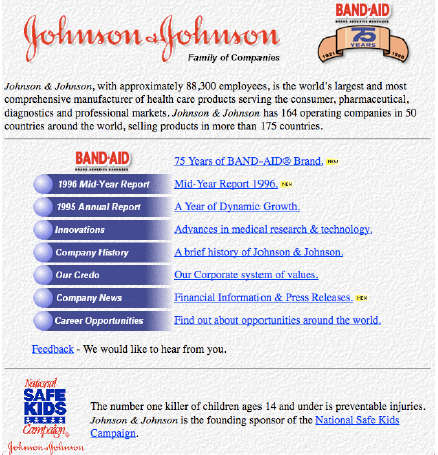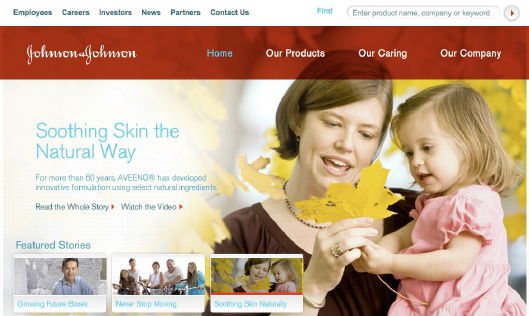Introduction
Products that deal with babies are usually expensive, and companies compete to create the most innovative product to entice consumers. In order to target babies, a company needs to understand the needs of the parents and their dedication to the safety of the child. Parents will seek the best product in the market that promises to be safe for use. Before embarking on a particular product, parents usually carry out rigorous research before choosing one that seems to be the best. Research is mainly through consumer product reviews, websites, and word of mouth. Parents seek fact-based information that is irrefutable and is constant across a variety of sources.
The information can also be emotion-oriented and depend on various aspects that change from one consumer to another. For first time parents, the type of medium utilized in securing information will determine the type of product purchase. A company engaging in baby products must, therefore, understand the motivations and needs of their consumers i.e., parents.
History
Johnson and Johnson were founded in 1886 by three brothers, Robert Wood Johnson, James Wood Johnson, and Edward Mead Johnson, to advance health care and the state of medicine by concentrating on infection control (Gurowitz, 2007). The three brothers worked together to develop surgical dressings as well as medicated plasters. In 1892, Dr. Fredrick Kilmer, the company’s first research director, received a complaint from a physician claiming that the medicated plasters caused skin irritations to many patients. Kilmer recommended the use of Italian talc powder to ease the irritation and sent them a can of the same (Gurowitz, 2007).
Consumers soon discovered that the talc was also very useful in soothing diaper rash and informed the company of this fact. This feedback led to the birth of Johnson’s ® Baby Powder in 1893. Apart from the baby powder, the company also developed the maternity pack, and thus Johnson’s ® Baby brand came into being.
At the start of the 20th Century, Johnson’s ® Baby dominated the market and was widely utilized in American homes. Through clever marketing and anticipation of the needs of mothers, the Johnson and Johnson Company gained the name “the baby company” despite offering other pharmaceutical products. For over 120 years, the brand has utilized consumer loyalty to stay ahead of competitors and maintain its market share in the baby cosmetics industry. In order to create and maintain consumer loyalty, the company has instituted various marketing and communication strategy that seeks to show its commitment to enhancing the health of its consumers.
Maternity Packs – Understanding the Needs of Consumers

In the late 1800s, most childbirth took place at home. With the birth of Johnson’s ® Baby Powder, the company focused on other products to ensure the health of both mother and child. The company developed obstetric and maternity kits that focused on the health of both mother and child. The company engaged in a campaign dubbed “every child has the right to be well-born” that sought to improve the survival of babies born at home. In the campaign, the company sold several kits e.g., Johnson’s ®First Dressing Packet for Infant, that contained nitrate of silver to prevent infections during childbirth as well as the baby powder for future use (Gurowitz, 2007).
Maslow argued that physiological needs are the most fundamental to human beings. He argued that maintaining adequate birth rates fall under this category and that people will always seek that which promises the survival of children (Martinez, 2013). Prior to Johnson’s ® baby powder, there was no product catering to mothers and children. Johnsons® Baby thus provided parents with tools important for the survival of their children and thus earned the title “The Baby Company.”
The Branding of Johnsons® Baby Powder
Johnson’s® Baby grew into a household brand, mainly due to its iconic baby powder. Originally developed from talc powder and fragrances, the baby powder revolutionized baby cosmetics and formed the foundation for the baby brand. In order to appeal to more consumers, the company took various steps. The first step was in packaging the product. The company had always packaged the baby powder in rectangular containers since its first sale in 1893. According to Kilmer House, the rectangular containers served two purposes. First, the containers held more powder, and thus parents could appreciate value for money. Secondly, the rectangular shape allowed ease of use, in that parents can easily hold it in one hand while dealing with a wet baby (Gurowitz, 2009).

The second innovation in the branding of Johnson’s® powder was the dissemination of information. Since the birth of Johnson’s Baby, the company has coupled its products with pamphlets and other media instructing mothers on helpful ways to care for babies. The company collects information from various sources and combines them together so that a new mother can learn from those who have undergone the same process. This created a trust between mothers and the company that has persevered through various generations.
Consumer Learning – The Scent of Johnson’s® Baby
One of the most crucial aspects of Johnson’s® Baby is the scent associated with its product. In its infancy stage, Johnson’s Baby Powder was utilized as a scent that most people associated with babies. Over 125 years later, people all over the world associate the scent of the baby powder with that of a baby. Schiffman et al. (2014) describe consumer learning as acquiring knowledge and information about a product, deliberately or instinctively, and utilizing this to future related behavior.
The baby scent utilized by the brand created a situation in which parents associated products from this brand to a baby. For new parents, this scent makes them more likely to use this product for their child and any subsequent children that may arise. In 2009, Johnson’s® Baby engaged in an experiential marketing strategy in India where two major newspapers were distributed carrying the trademark Johnson’s baby scent as well as a half-page advert promoting Johnson’s® baby brand (Richard, 2015). The baby scent is so ingrained in most society, such that without a baby nearby, one will assume that Johnson’s baby powder is being used somewhere.
Johnson’s® Baby Consumer Perception
The scent of their products was the first step the brand took to cultivate a positive consumer perception. Martinez (2013) describes consumer perception as the process in which a consumer collects and synthesizes stimuli, and from this creates a meaningful image of the product. Johnson’s® Baby has, over the years, cultivated trust with its consumers such that they express blind consumer behavior. In order to be the number one household baby product, Johnson’s® Baby has undertaken many strategies.
The first strategy is the development of gift packages. At the beginning of the great depression in 1921, the company rolled out the Gift Box. This product was composed of small packages of Johnson’s Baby products and was available at a relatively cheap price (Gurowitz, 2009). Another way that the company maintained a positive perception is by targeting mothers. Johnson’s Baby has ensured that its product and marketing mix concentrated on mothers. It created and maintained a reputation as the mother’s choice by proving it was safe for babies and economical to parents.
In the “You were a Johnson’s Baby” marketing campaign and the “Remember When” Campaign, the company describes how previous generations used Johnson’s Baby Products and its success and growth since then (Ploof, 2009). The company utilized this campaign to highlight the bond between parents and their babies and to associate this relationship with mothers and Johnson’s® Baby products. Adverts for Johnson’s Baby product usually consist of the product and a picture of the child and occasionally of the mother as well.

No More Tears® Campaign
In response to advancements in consumer behavior studies, 1960 saw an increase in advertising. Johnson’s® Baby took a deeper focus on the feelings that exist between a new mother and her child. The company saw how mothers had problems washing newborns and engaged in researching a new washing agent that was less abrasive to children. The NO MORE TEARS® formula introduced a new form of cleansing agents that was mild and would not bring stinging to the child’s eyes. Johnson’s Baby was the innovator of these types of cleaners, and within half a year, the company had captured 75% of the baby shampoo market and maintained this position for over 50 years (Thomas, 2014). The success of the NO MORE TEARS® campaign is also due to real-world evaluations between the brand and mothers all over the world.

The NO MORE TEARS® formula was an innovative product that emphasized Johnson’s dedication to improving the care of babies worldwide. The development of this product highlighted the company’s commitment to work with mothers, scientists, and healthcare professionals to ensure that baby products developed the company is of the highest standards (Brent, 2011). The gel packaged in attractive containers mainly focused on new mothers and sought to eliminate fears on the difficulties of washing a newborn. The Ads presented children who were happy while washing their hair with the new soap, thus creating a warm feeling in any mother who viewed them and instilling a level of security about the product.
Persuading Consumers – Baby Smash Campaign
Since its inception, Johnson’s® Baby has utilized many persuasion techniques in order to maintain its market share. Its persuasion techniques range from its unique scent, its familiar shape of its baby powder products as well as numerous advertisements promoting its products. Over the last decade, new media publishing platforms have given companies the ability to promote their products in-house without relying on 30-second broadcast messages and minute columns in magazines and newspapers. Platforms such as social networking application e.g., Facebook and Twitter, blogs, online videos, and podcasts, have pushed marketing into a new age where a company can inform its consumers about its product in a quick, cheap, and efficient manner.
Johnson and Johnson operated for over 110 years without an online presence until 1996 when it launched its first website (Ploof, 2009). The website with the handle jnj.com presented a simple brochure of Johnson and Johnson’s products. Over the years, the website has grown in size and complexity, with over 7000 indexed pages and traffic of over 126,000 American visitors every month (Ploof, 2009).


In 2006, the company joined the web 2.0 with its first blog, dubbed Kilmer House, named after Dr. Fredrick Kilmer, the company’s first scientific director. According to the blog, its goal is to provide a way to illuminate the history of Johnson and Johnson and the people who work with the company (Gurowitz, 2007). With Kilmer House, Johnson and Johnson offer consumers a look at the past and the contributions of the company in the skincare, health care, and pharmaceutical arena. Johnson’s Baby utilizes the website and blog to advertise its product as well as receive feedback from its consumers. By using the website, the brand was able to deal with complaints, develop new products that satisfy the needs of their consumers as well as keep track on the performance of their products as well as their reception in the market.
One of the most popular online marketing campaigns in 2015 was the baby cake smash campaign held in the United Kingdom (Richard, 2015). The marketing campaign was held in anticipation of the birth of the UK next heir earlier this year. The company requested mothers across the globe to post pictures and videos of children eating birthday cakes in an untidy mess. The campaign wanted to show mothers that their children were just as appreciated as the next heir of the UK throne was. The reception was very positive with mothers all over the world taking part in the exercise.
The campaign was intentionally non-opportunistic, and the message was fun and entertaining. The consumers, relying on their innovations, provided all the content used in the campaign. The company focused on a narrow niche that involved its intended market. It focused on mothers at a time that they required advice on caring for a small baby and offered a way to enjoy a simple event with other mothers all over the world. Johnson’s® Baby has recognized that new media as a channel for transmitting messages is addressable in that information can be customized to address different receivers such as mothers from different countries and with different cultures.
New media is also interactive, and the company can advertise new products while at the same time receive feedback on how mothers appreciate the product and if they have any problems with it. Finally, new media offers measurable responses from receivers; hence, the company can collect data and manipulate it to determine its impact on the market.
Johnson’s® Baby Corporate Social Responsibility
At present, all companies that seek to succeed in the corporate market have to show a measure of corporate social responsibility. Incorporating CSR in the company’s strategic mission shows that the company is dedicated to the welfare of its consumers and the world at large (Johnson’s Baby, 2015). Johnson’s® Baby has, over the years, recognized the importance of CSR and has applied several procedures geared to the improvement of human life.
The brand is part of a bigger company that provides various medical and pharmaceutical products important to maintain the health of its consumers. Apart from this, the company has funded various studies that focus on health and sanitary issues. Studies carried out include research on bipolar disorder as well as psychological diseases.
The company has also instituted several strategies to ensure that it is environmentally friendly. In 2013, Newsweek ranked the company third in its Green Rankings comprising of the largest corporations in the United States (Brent, 2011). Its participation in environmental awareness has been in the form of reduction of energy use, waste, and water use. The company also has a high level of transparency concerning its day-to-day operations and a diverse and varied employee portfolio. In 2004, the company also decided to change its product’s plastic packaging selecting to use non-polycarbonate packages (Brent, 2011).
The company’s plant in Pennsylvania utilizes the largest solar-powered generator in the state. The company also allies with both EPA National Environmental Performance Track as well as the Climate Northwest Initiative program.
The company has also proved its social responsibility by investigating all claims of harmful products and ensuring they do not reach their consumers. In 1985, some physicians argued that the baby product was harmful when inhaled. The company quickly assured the public that the product is safe for external uses and has no ill effects when used as directed. In 2014, the company also eliminated two chemicals from all its products when studies showed that they are potentially harmful to the health of children (Thomas, 2014). The company also undertakes a periodic review of its products to ensure that they are safe and up to date. In 2013, at the University of Manchester, academics showed that using Johnson’s Baby top-to-toe product is just as safe as using water only but much cleaner. Other studies have shown that virtually all products from the company are safe with minimal risks (Lavender, 2013).
Conclusion
The success of Johnson’s Baby® products has been largely due to consumer loyalty throughout the ages. Most of the consumers of these baby products grew up with Johnson’s Baby products around their household and thus formed a bond with them. The company has not only managed to maintain its customer base, but it has also been able to attract new consumers from different regions and cultures all over the world. Johnson’s Baby believes that the growth and development of a baby are dependent on the relationship between a mother and the baby. With this in mind, the company seeks to provide mothers with clinically proven products that evoke positive emotions, engage the senses, and that promote the loving bond between mother and child. By concentrating on both the mother and the child, the brand stands tall as the mother’s choice, and the company dubbed the “Baby Company.”
Recommendations
The company has depended on consumer loyalty and its iconic status in the baby care market for its success. The new generation is, however, capricious and usually, make choices base on logic and information. The company should thus seek to solidify its position as a safe company that is concerned with the safety of children. Its adverts, blogs, and website should focus on the ingredients used in its product, its history of providing safe products, and plans for future improvement.
The company should also improve its presence in the online world as well as other types of media. While the blog is a wonderful idea, it is too rigid and is incapable of real-time communication between mothers and the company. The company should, therefore, create a portal that offers mother prenatal advice as well as accepting feedback on all products.
References
Brent, A. (2011). Johnson’s® Baby. Super Brands. Web.
Gurowitz, M. (2007). The Birth of Our Baby Products. Kilmer House. Web.
Johnson’s Baby (2015). Our Products. Johnson’s Baby. Web.
Lavender, T. (2013). Randomized, Controlled Trial Evaluating a Baby Wash Product on Skin Barrier Function in Healthy, Term Neonates. Journal of Obstetric, Gynecologic, and Neonatal Nursing. Web.
Martinez, P. (2013). The Consumer Mind: Brand Perception and the Implications for Marketers. KoganPage, London. Web.
Ploof, R. (2009). Johnson and Johnson Does New Media. RonAmok, 17. Web.
Richard, F. (2015). How Johnson’s Baby Got Content Marketing Right. PanXPan Knowledge. Web.
Schiffman, L., O, Cass, A., Paladino, A. and Carlson, J. (2014). Consumer Behavior. French Forest, NSW: Pearson, Australia. Web.
Thomas, K. (2014). The ‘No More Tears’ Shampoo, Now With No Formaldehyde. The New York Times. Web.